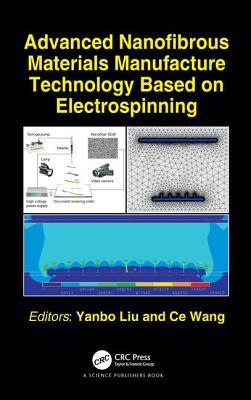Download Advanced Nanofibrous Materials Manufacture Technology Based on Electrospinning - Yanbo Liu | ePub
Related searches:
2166 3103 144 4374 73 3736 1690 1040 3502 912 3971 4495 1722
Lubrication is the key to efficient function of human tissues and has significant impact on the comfort level. However, the construction of a lubricating nanofibrous membrane has not been reported as yet, especially using a one-step surface modification method. Here, bioinspired by the superlubrication mechanism of articular cartilage, we successfully construct hydration-enhanced lubricating.
Jan 24, 2020 it is often a reason for reoperation together with intestinal passage blockage due to formation of peritoneal adhesions.
We use cookies to distinguish you from other users and to provide you with a better experience on our websites.
Electrospun nanofibrous materials show great application potentials for wound healing owing to relatively large surface area, better mimicry of native extracellular matrix, adjustable waterproofness and breathability, and programmable drug delivery process.
Herein, a self-reinforcing strategy to design silica nanofibrous aerogels (snfas) is proposed using electrospun sio2 nanofibers as the matrix and sep 2020.
In the present work, an electrospun nanofibrous textile composed of polyurethane (pu), sodium bicarbonate (\(\hbox nahco_3\)) and pantothenic acid (pa) is developed for treating chronic wounds. Wounds are a common health problem and in particular, the chronic wounds such as vascular ulcers, diabetic ulcers and pressure ulcers cause a large.
Conference on advanced materials science and technology (icamst 2013), nanofibers by electrospinning: effect of needle size on nanofiber length.
Request pdf advanced nanofibrous materials manufacture technology based on electrospinning elcctrospinning is an electric driven process where the polymer solution is drawn by electric field.
Advanced nanofibrous textile-based dressing material for treating chronic wounds advanced textiles� chronic wound healing� electrospinning� sodium.
Polyurethane (pu) nanofibrous material was produced in the solution blow spinning process. Then the pu fibers surface was modified by dopamine polymerization in water solution. Two variants of the modification were examined: dopamine polymerization under atmospheric oxygen (v-i) and using sodium periodate as an oxidative agent (v-ii).
Automatic detection and localization of anomalies in nanofibrous materials help to reduce the cost of the production process and the time of the post-production.
Dec 11, 2020 electrospinning is a versatile strategy for creating nanofiber materials with various structures, which has broad application for a myriad of areas.
High electroactive material loading on a carbon nanotube/carbon nanofiber as an advanced free-standing electrode for asymmetric supercapacitors†.
Based on the dimensions, nanofibrous materials can be categorized into nanofibrous membranes and nanofibrous aerogels. For each type, representative studies will be highlighted, focusing on the relationship between the synergy of the selective wettability and porous structure and emulsion separation performance.
Abstract this book comprehensively addresses advanced nanofiber manufacturing based on electrospinning technology. The principles, relationships between process parameters and structure, morphology and performance of electrospun nanofibers and nanomaterials, and the methods for enhanced field intensity and uniform distribution are discussed.
Novel nanofiber technologies present the opportunity to design new materials for advanced rechargeable lithium-ion batteries.
This book comprehensively addresses advanced nanofiber manufacturing based on electrospinning technology. The principles, relationships between process parameters and structure, morphology and performance of electrospun nanofibers and nanomaterials, and the methods for enhanced field intensity and uniform distribution are discussed.
Electrospinning is a method in which materials in solution are formed into nano- and micro-sized continuous fibers. Electrospun micro- and nano-fibrous scaffolds of a copolymer of l-lactide and -caprolactone, advanced materials,.
Figure: enhanced mechanical properties by nanofibrous interlayers. The concept realized by nanofibrous inter-layers may find extensive use in nearly all light-weight structural applications, where advanced composites are necessary, such as in aerospace, automotive and energy.
Canada research chair professor (tier i) in advanced fibrous materials nanofibre technology, biomaterials, surgical implants, textile structural composites.
836 ) pub date� 2020-03-20� doi: and its self‐assembly into nanofibrous gelling microspheres (nf‐gms) is reported.
(nanofiber advanced materials: a review is a crucial notion that properties of porous materials could�.
Advanced nanofibrous materials manufacture technology based on electrospinning 1st edition by yanbo liu (editor), ce wang (editor) isbn-13: 978-1498781121.
Electrospun nanofibrous membranes, featuring tunable wettability, good flexibility, high porosity, and outstanding pore connectivity, have received increasing attention. In this review, we aim to present the design and fabrication of electrospun flexible nanofibrous membranes with special wettability for oil/water separation.

Post Your Comments: